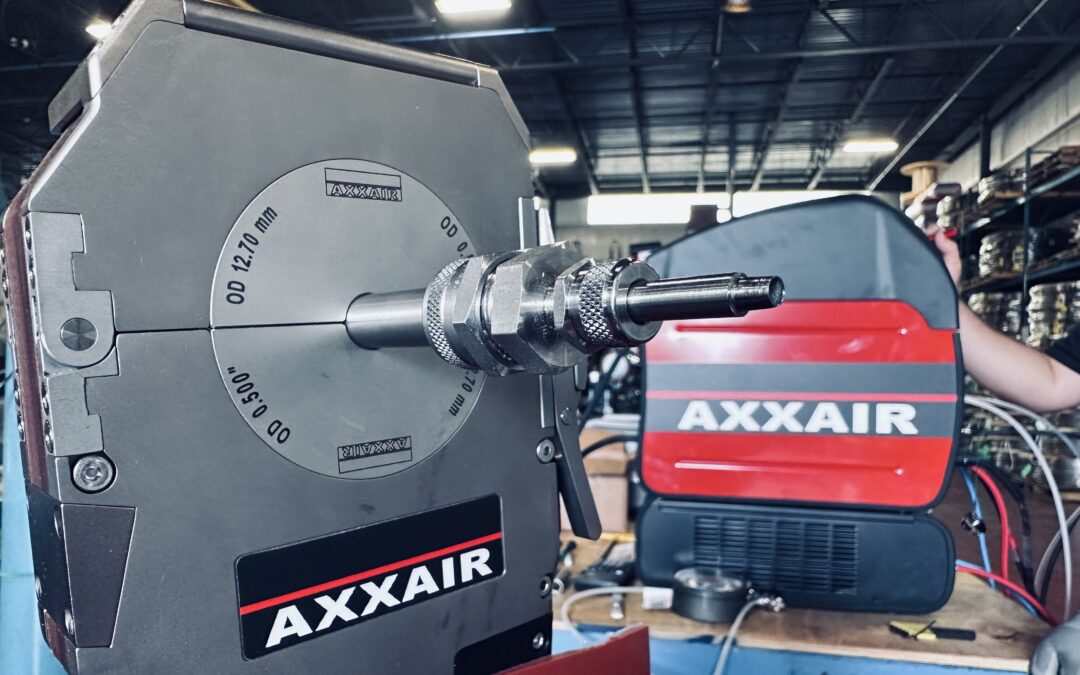The decision to use mechanized or automatic orbital TIG welding can be driven by various factors, such as economic, technical, and organizational considerations. Some of these may be more significant than others, but all contribute to the effectiveness of orbital welding in industrial applications. The process offers a wide range of benefits, making it a strong choice for many industries. The key advantages include:
1. Increased Productivity Compared to Manual Welding:
Orbital welding, when compared to manual TIG welding, significantly boosts productivity. Whether for repetitive tasks in the workshop or complex assembly jobs on-site, orbital welding ensures that approved weld sequences are consistently repeated. This leads to a reduction in time-consuming repair work and minimizes delays.
Orbital welding, when compared to manual TIG welding, significantly boosts productivity. Whether for repetitive tasks in the workshop or complex assembly jobs on-site, orbital welding ensures that approved weld sequences are consistently repeated. This leads to a reduction in time-consuming repair work and minimizes delays.
2. Consistent, High-Quality Welds:
The quality of welds produced by mechanized equipment is typically superior to manual welding. Once an appropriate weld program is developed, the welding cycle can be repeated as many times as necessary, without variations or defects. This ensures uniformity and reliability in the final product.
The quality of welds produced by mechanized equipment is typically superior to manual welding. Once an appropriate weld program is developed, the welding cycle can be repeated as many times as necessary, without variations or defects. This ensures uniformity and reliability in the final product.
3.Reduced Skill Requirements for Operators:
Certified welders are often hard to find and command high wages. However, with proper training, skilled technicians can efficiently operate orbital welding equipment and achieve excellent results. This reduces the need for highly specialized personnel, lowering overall labor costs.
Certified welders are often hard to find and command high wages. However, with proper training, skilled technicians can efficiently operate orbital welding equipment and achieve excellent results. This reduces the need for highly specialized personnel, lowering overall labor costs.
4. Adaptability to Harsh Environments:
Orbital welding is ideal for challenging environmental conditions. Whether dealing with limited space, poor visibility, or the presence of radiation, the welding head can be positioned precisely to perform the weld safely and efficiently. Video support often assists in these situations, ensuring high-quality results even under tough conditions.
Orbital welding is ideal for challenging environmental conditions. Whether dealing with limited space, poor visibility, or the presence of radiation, the welding head can be positioned precisely to perform the weld safely and efficiently. Video support often assists in these situations, ensuring high-quality results even under tough conditions.
5. Traceability and Quality Control:
Modern orbital welding equipment is equipped with real-time monitoring systems that track welding parameters. This allows for the generation and storage of complete weld protocols, which can be output as printed reports. Advanced data acquisition systems can be integrated with quality management systems, enabling automatic data transfer without disrupting the welding process.
Modern orbital welding equipment is equipped with real-time monitoring systems that track welding parameters. This allows for the generation and storage of complete weld protocols, which can be output as printed reports. Advanced data acquisition systems can be integrated with quality management systems, enabling automatic data transfer without disrupting the welding process.

